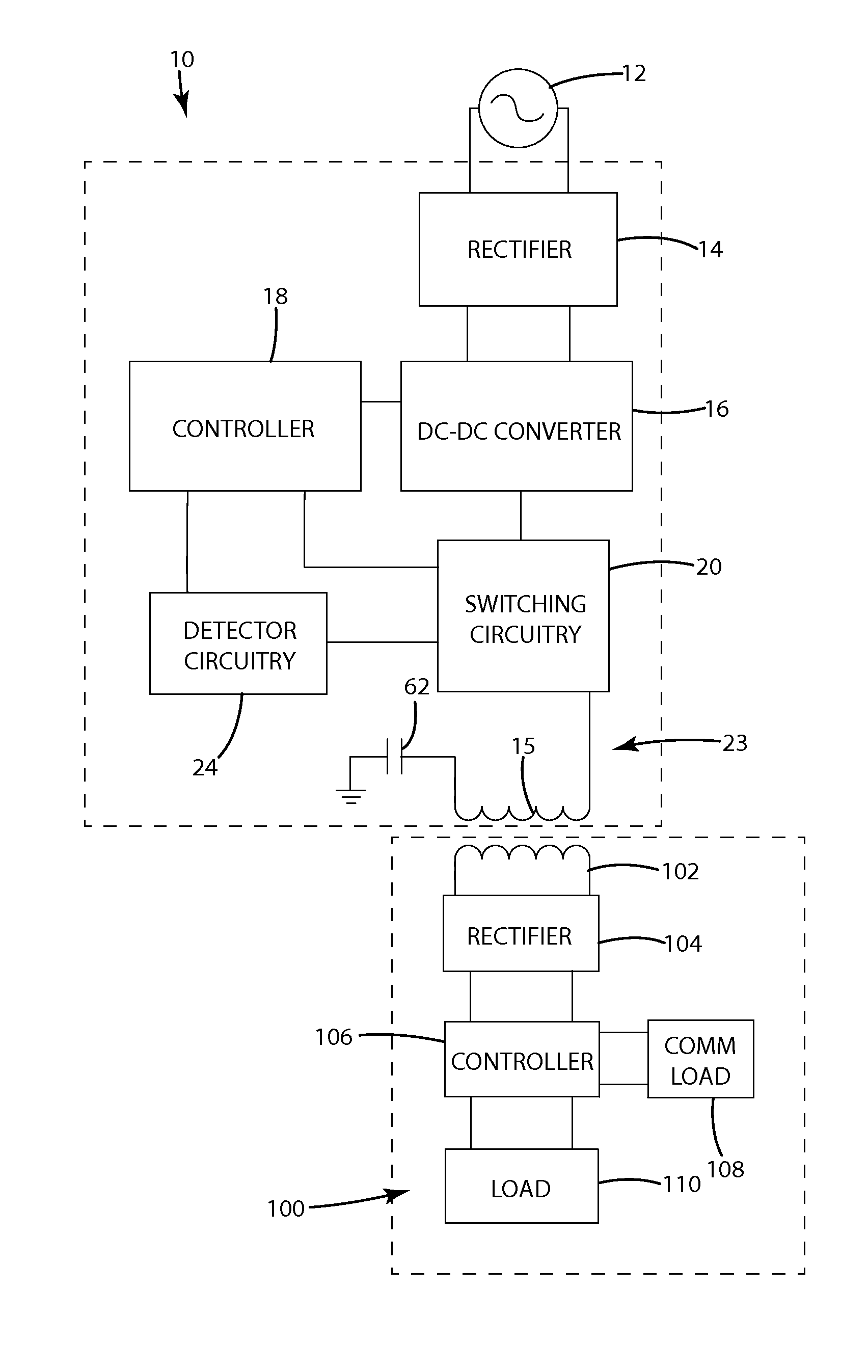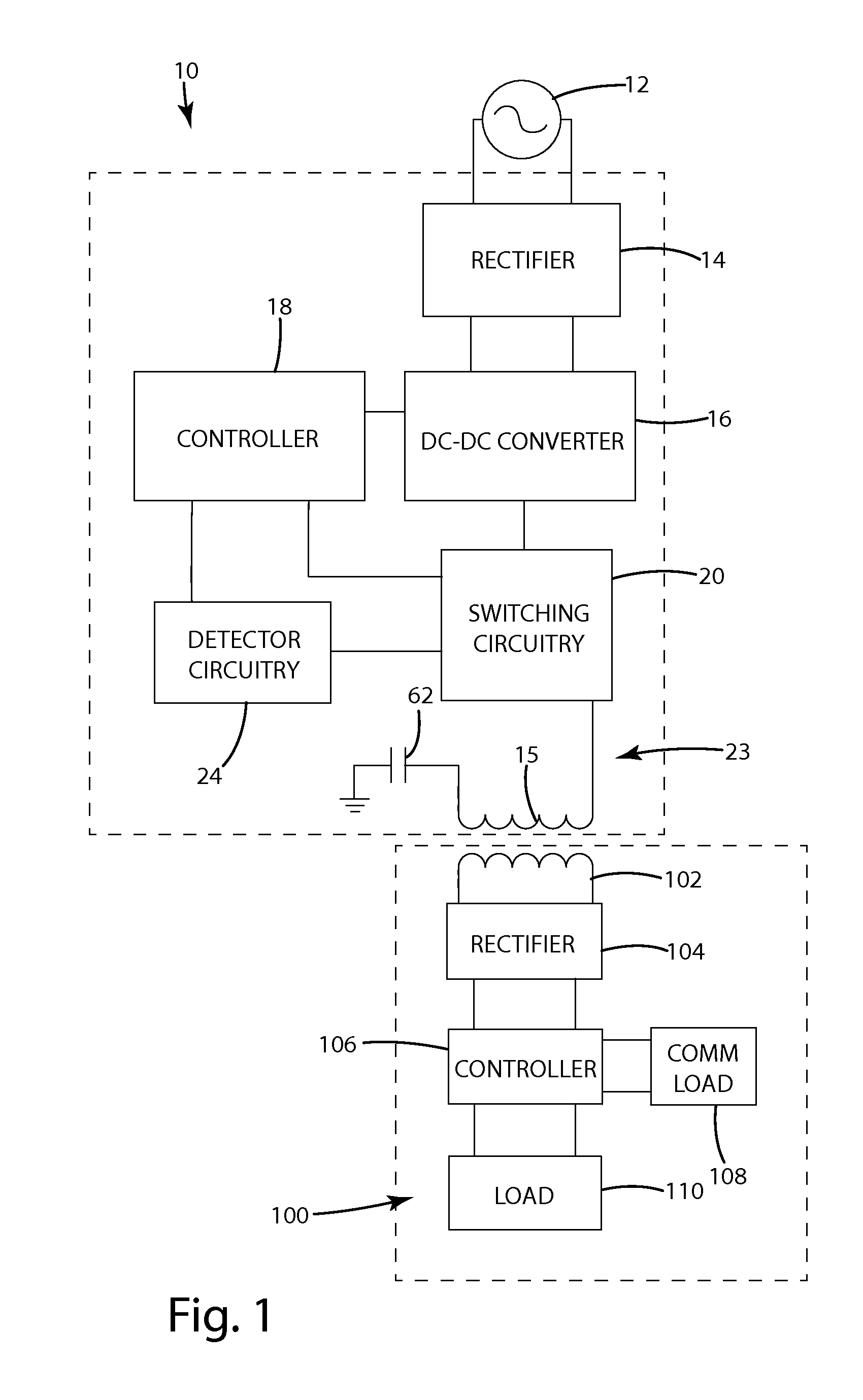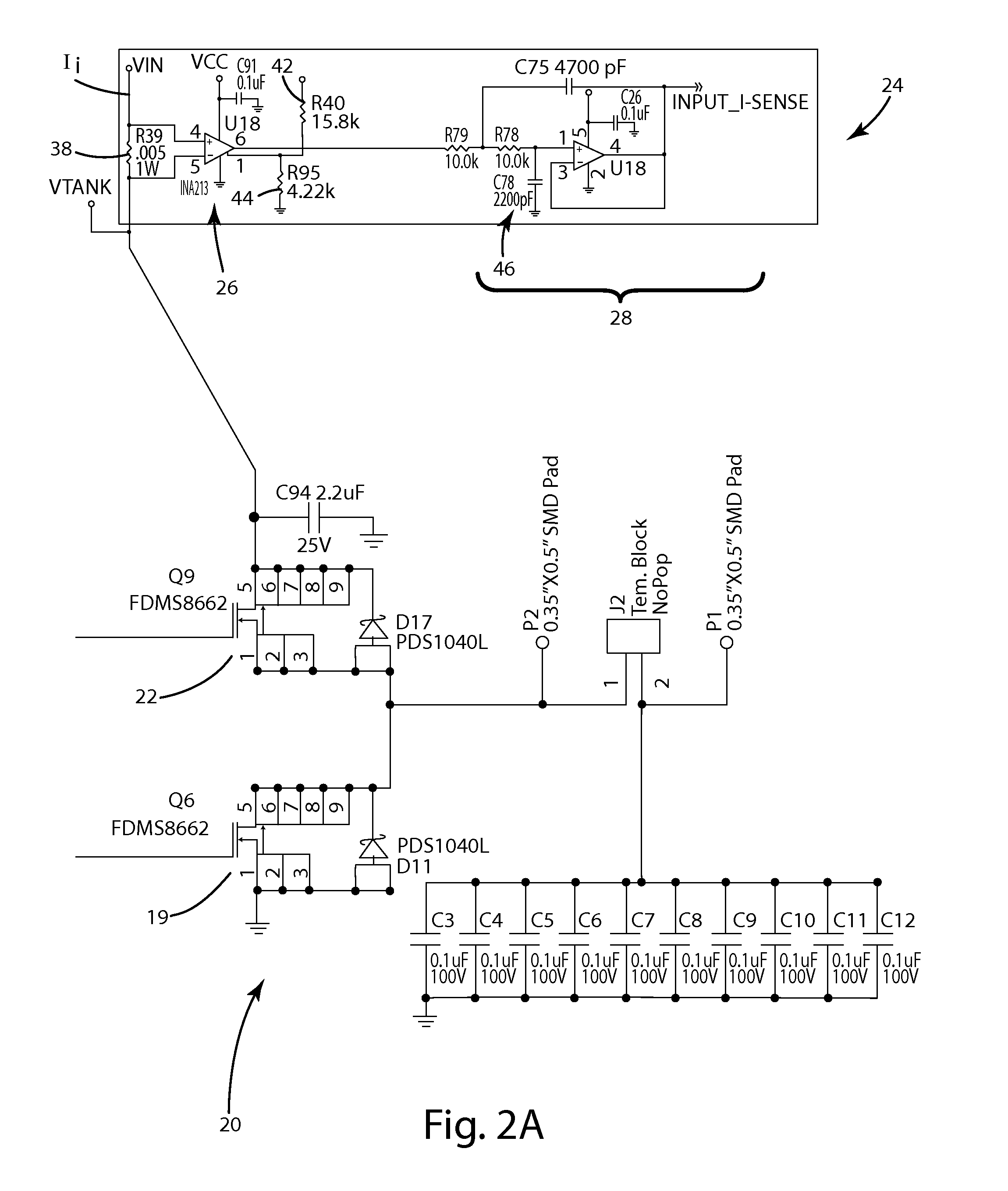Systems and methods for detecting data communication over a wireless power link
a data communication and wireless power link technology, applied in the field of wireless power supplies with integrated data communications, can solve the problems of affecting performance, presenting other undesirable issues, and the signal-to-noise ratio inherent in this existing technique is relatively low, and achieves simple and effective systems and methods, a smaller overall input range, and a higher signal-to-noise ratio
- Summary
- Abstract
- Description
- Claims
- Application Information
AI Technical Summary
Benefits of technology
Problems solved by technology
Method used
Image
Examples
Embodiment Construction
The present invention is directed to systems and methods for detecting on the primary-side of a wireless power supply data communications modulated onto the power signal on the secondary-side. In one aspect, the present invention detects communications in the input power to the switching circuit. In this aspect of the invention, the wireless power supply includes a detector for generating a signal indicative of the current in the input to the switching circuitry, a band-pass filter for filtering the detected signal, an amplifier for amplifying the filtered signal, a filter for filtering the amplified signal and a comparator for converting the final signal into a stream of high and low signals that can be passed to a controller for processing as binary data stream. In a second aspect, the present invention detects communications through changes in the phase relationship between the current and voltage in the primary-side tank circuit. In this second aspect, the wireless power supply ...
PUM
 Login to View More
Login to View More Abstract
Description
Claims
Application Information
 Login to View More
Login to View More - R&D
- Intellectual Property
- Life Sciences
- Materials
- Tech Scout
- Unparalleled Data Quality
- Higher Quality Content
- 60% Fewer Hallucinations
Browse by: Latest US Patents, China's latest patents, Technical Efficacy Thesaurus, Application Domain, Technology Topic, Popular Technical Reports.
© 2025 PatSnap. All rights reserved.Legal|Privacy policy|Modern Slavery Act Transparency Statement|Sitemap|About US| Contact US: help@patsnap.com



